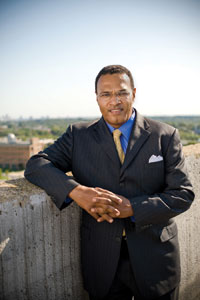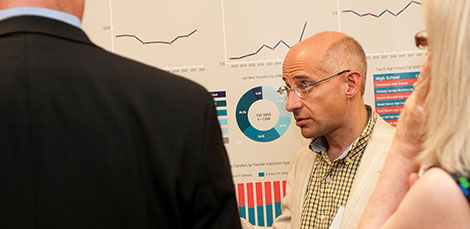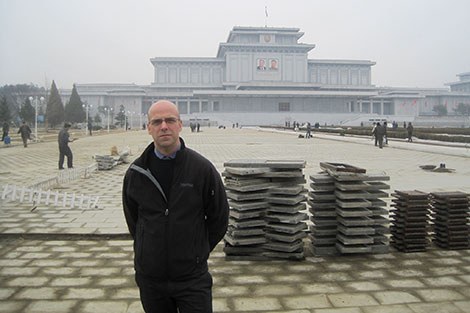UMBC President Freeman A. Hrabowski, III, takes your questions.
In 2007, you signed the American College & University Presidents’ Climate Commitment. Are we making progress to become a more sustainable UMBC?
– Richard Byrne ’86
Any priority that becomes critical to the future of the university will require attention from people at all levels of the institution, whether we are talking about increasing the number of students from low-income backgrounds who succeed at the university, or strengthening our reputation and visibility in the arts and humanities. The President, the provost, the deans, the faculty, the staff and the students have to work collectively with our alumni and external partners to think through the best and most effective strategies.
The same is true when we think about sustainability. From the beginning, when I was asked to sign the commitment, what was most important to me was that the campus already had shown a commitment to sustainability in a variety of ways.
That commitment was there early in my presidency. We made decisions about bwtech@UMBC and the portion of that land that would be focused on sustainability through the Conservation and Environmental Research Area (CERA). The campus’s interest in sustainability also played a big part in how we decided to expand the Retriever Activities Center (RAC).
Green space is important on this campus. Many people don’t realize how different the campus looks today from 25 or 30 years ago, and that difference is not simply a matter of more buildings. It is a difference that has resulted from a philosophy focused on increasing the green space on campus. We have respected and expanded the green space on campus. We’ve made decisions about parking lots versus parking decks. It also has meant tearing up some of the concrete from the 1960s and planting grass, and planting the trees that encircle the campus now.
Signing the commitment was important because our campus community said that we wanted to make sustainability one of our values, and we needed “stretch goals.” Clearly, this is a goal that we will have to stretch to reach.
I’ll never forget having a student write to me at the time and say that my signing the commitment was done for publicity purposes. My response was: “Watch the actions of the campus. I’m not going to try to prove anything to you. Judge us by what we do. Judge us by the updates and the progress reports.”
We have been very active in trying to make progress on every level, from the construction of new buildings to LEED standards to new initiatives in our curriculum. I think it’s important to remember the research, the teaching, and the outreach components of the effort. It has been encouraging to see how many UMBC faculty members have been involved in their research and teaching in sustainability efforts. From the new programs we have created in environmental science and environmental engineering to the work in interdisciplinary studies that focuses on sustainability. What could be more exciting than our role in the new Institute of Marine and Environmental Technology (IMET) at the Inner Harbor, where we’re doing research and creating new technologies in that important field?
So we have made substantive efforts across the board to highlight the importance of this work and to attract more students into the field. Even the book we have selected for our UMBC New Book Experience in 2013 – Hot: Living Through the Next Fifty Years on Earth, by Mark Hertsgaard – focuses on the environment and sustainability.
We have made substantial progress since I signed the commitment. UMBC has reduced our carbon footprint by more than 13 percent since 2007 – even with a 15 percent increase in the university’s enrollment and the addition of new buildings on campus.
But the best way I can talk about sustainability as UMBC’s President is to make the point that it’s all around us in everything that we’re doing – sitting in rooms set at a temperature that saves electricity, making choices about how we travel, or the creation of new academic programs of the future. The key has been to pay attention to the issue of climate change, have ways of measuring our effectiveness and progress, and also create opportunities to discuss not only our successes, but also the challenges we face.
Tags: Fall 2013




